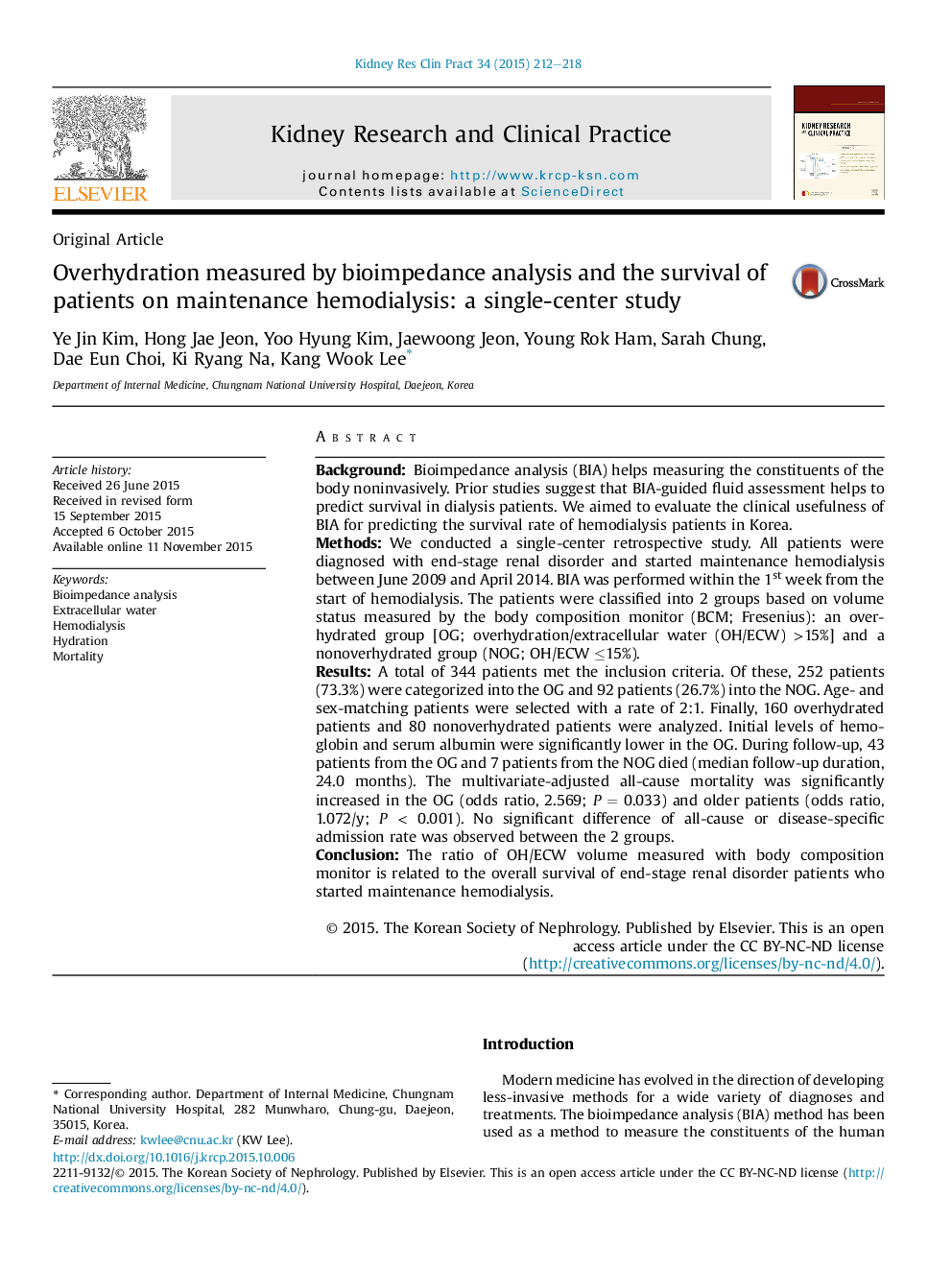| Article ID | Journal | Published Year | Pages | File Type |
|---|---|---|---|---|
| 3890892 | Kidney Research and Clinical Practice | 2015 | 7 Pages |
BackgroundBioimpedance analysis (BIA) helps measuring the constituents of the body noninvasively. Prior studies suggest that BIA-guided fluid assessment helps to predict survival in dialysis patients. We aimed to evaluate the clinical usefulness of BIA for predicting the survival rate of hemodialysis patients in Korea.MethodsWe conducted a single-center retrospective study. All patients were diagnosed with end-stage renal disorder and started maintenance hemodialysis between June 2009 and April 2014. BIA was performed within the 1st week from the start of hemodialysis. The patients were classified into 2 groups based on volume status measured by the body composition monitor (BCM; Fresenius): an overhydrated group [OG; overhydration/extracellular water (OH/ECW) >15%] and a nonoverhydrated group (NOG; OH/ECW ≤15%).ResultsA total of 344 patients met the inclusion criteria. Of these, 252 patients (73.3%) were categorized into the OG and 92 patients (26.7%) into the NOG. Age- and sex-matching patients were selected with a rate of 2:1. Finally, 160 overhydrated patients and 80 nonoverhydrated patients were analyzed. Initial levels of hemoglobin and serum albumin were significantly lower in the OG. During follow-up, 43 patients from the OG and 7 patients from the NOG died (median follow-up duration, 24.0 months). The multivariate-adjusted all-cause mortality was significantly increased in the OG (odds ratio, 2.569; P = 0.033) and older patients (odds ratio, 1.072/y; P < 0.001). No significant difference of all-cause or disease-specific admission rate was observed between the 2 groups.ConclusionThe ratio of OH/ECW volume measured with body composition monitor is related to the overall survival of end-stage renal disorder patients who started maintenance hemodialysis.
